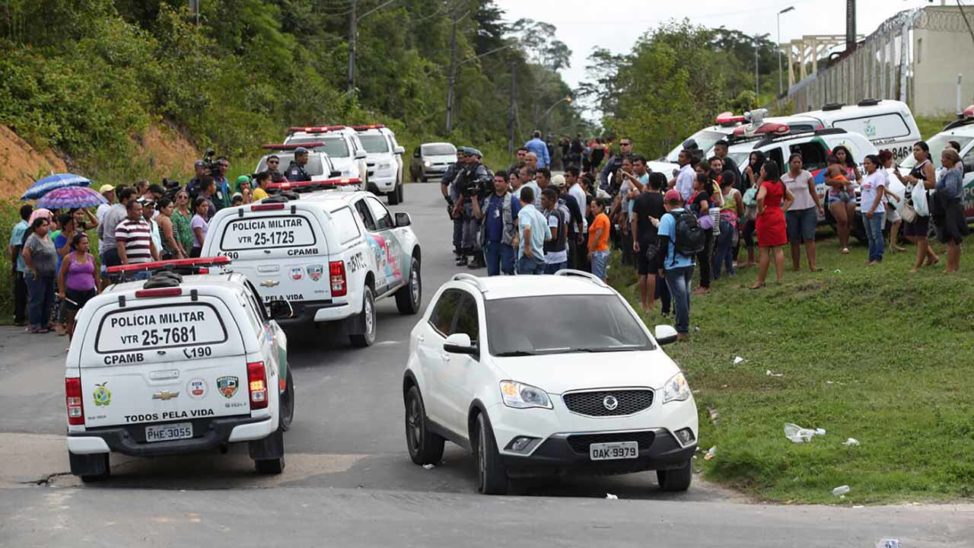Rioting inmates in Brazil decapitated and brutally assaulted their rivals, killing at least 60, when fighting erupted between two gangs at a prison in the Amazon region, officials said Monday.
The 17-hour riot broke out Sunday afternoon and lasted through the night at a prison on the outskirts of Manaus, the capital of Amazonas state, said state public security secretary Sergio Fontes.
He called it “the biggest massacre” ever committed at a prison in the state.

Relatives of inmates gather at the main gate of the Anisio Jobim Penitentiary Complex to ask for information after a riot at the prison left at least 60 people killed and several injured, in Manaus, Amazonia state, Brazil on January 2, 2017. At least 60 people were killed in a prison riot in Brazil’s Amazon region when fighting broke out between rival gangs.
Bloodied and burned bodies were stacked in a concrete prison yard and piled in carts, an AFP photographer at the scene said.Outside, heavily armed police hunted for inmates feared to have escaped through a series of tunnels discovered at the Anisio Jobim penitentiary complex.
Fontes said 16 tunnels were discovered in all. He told journalists that authorities were still trying to determine whether any inmates had escaped.
Brazilian news site G1 reported that more than 130 had escaped.
Police were only able to restore order at the prison on Monday morning, freeing 12 guards who had been taken hostage, Fontes said.
They found a horrific scene inside.
“Many (victims) were decapitated, and they all suffered a lot of violence,” Fontes told a press conference.
He said the gruesome scene appeared aimed at sending a message from the Family of the North (FDN), a powerful local gang, to rivals from the First Capital Command (PCC), one of Brazil’s largest gangs, whose base is in Sao Paulo, some 2,700 kilometers (1,650 miles) to the southeast.
“During the negotiations (to end the riot), the prisoners had almost no demands,” Fontes told local radio network Tiradentes.
“We think they had already done what they wanted: kill members of the rival organisation.”
Authorities have counted 60 bodies so far, all of them inmates, the head of the state’s prisons administration, Pedro Florencio, told journalists.
– ‘Silent war’ –
It was the latest eruption of horrific violence to hit Brazil’s underfunded and overcrowded prisons.
In October, deadly riots broke out at three separate prisons blamed on fighting between members of the country’s two largest gangs, the PCC and the Red Command (CV).
During that episode, rioting inmates took visitors hostage, beheaded rivals and burned others alive, killing 33 people in all, authorities said.
Brazil’s prisons are often under the de facto control of drug gangs, whose turf wars on the outside are also fought out among inmates.
“There is a silent war of drug trafficking, and the state needs to intervene,” Fontes said.
“What did we see in this case? One faction fighting another, because each wants more money. The fight is for money and space.”
Brazil has struggled for years against a lucrative and violent drug trade.
But jailing drug traffickers has done little to solve the problem. It may even fuel it, critics say.
Human rights groups have long complained about the conditions in Brazilian prisons.
Some 622,000 people were imprisoned in Brazil as of the end of 2014, most of them black males, according to a justice ministry report.
That makes it the world’s fourth-largest prison population, the report said, after the United States, China and Russia.
Brazil’s prisons need 50 percent more capacity to handle the current number of inmates, the justice ministry report found.
There were 1.67 prisoners for every available space, it said. In Amazonas state, the figure was 2.59 prisoners for every space.





